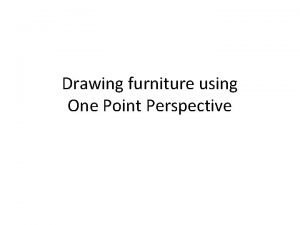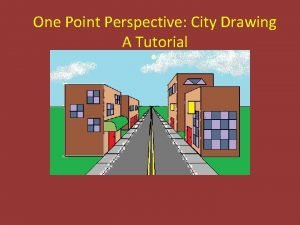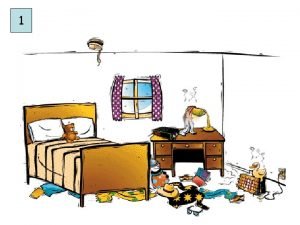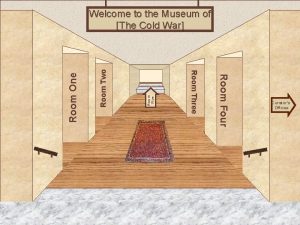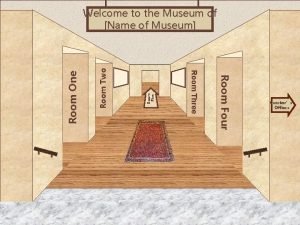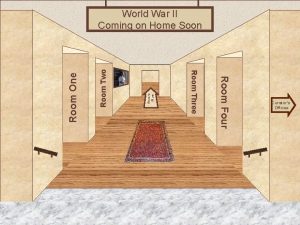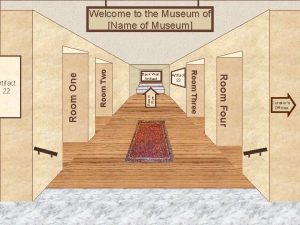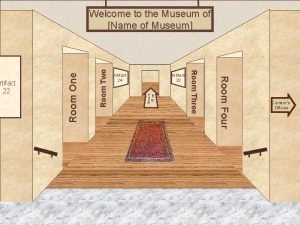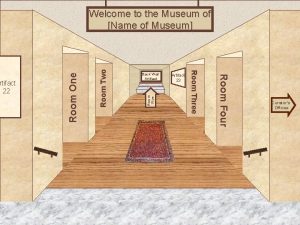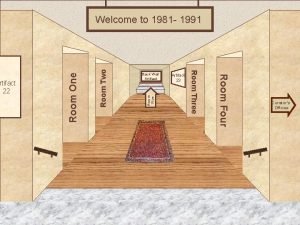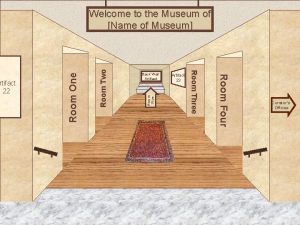ONE POINT PERSPECTIVE Living Room in One Point











- Slides: 11

ONE POINT PERSPECTIVE (Living Room in One Point Perspective) Subject : DRAFTING Studio Class: BFA-I (Session 2019 -2022) Ar. Sahar Amjad M-Arch Scholar (UET), B-Arch (UET) Assistant Professor (Visiting) Institute of Design and Visual Arts, Lahore College for Women University, Lhr.

LIVING ROOM IN ONE POINT PERSPECTIVE To create a room using One Point Perspective you need to know a few basic things. One Point Perspective is also called Parallel Perspective because YOU the viewer (and artist) are parallel to the objects that you will be drawing. Also, vertical lines are parallel and horizontal lines are parallel and the back edges of objects that recede in the distance are parallel to the front edges of those objects. Terms to know • Horizon line (HL): This is the horizontal line that marks the horizon as well as the viewer’s eye level. You can place the HL anywhere on the page. • Vanishing point (VP): This is the dot on the horizon line where all the parallel lines appear to meet. • Orthogonal lines: These diagonal lines, which are often imaginary, connect the vanishing point to other points in your drawing. They can keep you grounded when creating your perspective drawing.

1. Make the horizon line Draw your horizon line close to middle of the page. Next, draw the back wall of your room, using only horizontal and vertical lines. It can be square or rectangular, but keep it small so you'll have room on the page to add side walls, a floor and a ceiling later. Make sure at least part of the back wall overlaps the HL.

2. Figure out your vanishing point

3. Sketch orthogonal lines From the VP, draw two orthogonal lines that stretch out, making sure they go through the corners of the room. 4. Draw walls At any point along one of the orthogonals, draw a new box. Use only vertical and horizontal lines that intersect at each orthogonal line.

5. Start a chair Start with a simple wooden chair. Draw the front part first, then add eight orthogonal lines, two lines originating from each point on the chair back to the vanishing point.

6. Finish the seat • Set the depth of your chair by choosing a point fairly close to the original lines of the chair but still working inside the orthogonal lines. • Work your way around all the orthogonal lines, making sure each line is parallel to the corresponding line on the front part of the chair. You've now drawn the back of your chair.

7. Add more furniture • Furnish the living room with more things, like a book shelf or chest of drawers, sofas, side tables etc. Use the same method as you did for the chair: Sketch the front part, connect orthogonal lines to the vanishing point and add depth. • Then draw a window — it's easy. Sketch a set of vertical lines connected by orthogonals to make a rectangle in one-point perspective on the wall. • When you've finished, erase all the orthogonal lines and VP.

FINAL OUTCOMES OF LIVING SPACES IN ONE POINT PERSPECTIVE


BOOK REFERENCES • Architectural Graphics by Francis D. K. Ching • Perspective Made Easy by Ernest R. Norling
 Two point perspective living room
Two point perspective living room Two point perspective staircase
Two point perspective staircase Ba-room ba-room ba-room baripity
Ba-room ba-room ba-room baripity Upstairs
Upstairs How to draw a room using one point perspective
How to draw a room using one point perspective Perspective city
Perspective city 2 point perpective
2 point perpective Room to room 19
Room to room 19 Hotel.hotelno=room.hotelno(hotel room)
Hotel.hotelno=room.hotelno(hotel room) Describe a picture
Describe a picture Silver carpet bedroom
Silver carpet bedroom Prepositions of place living room
Prepositions of place living room




